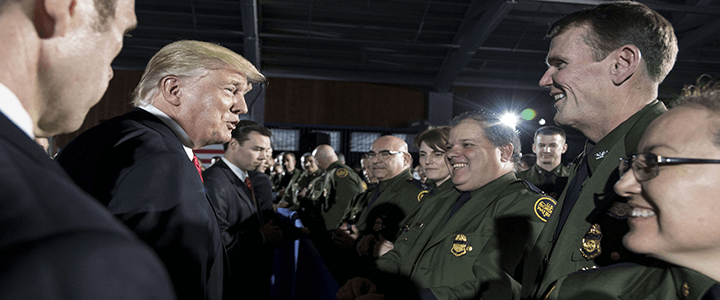Today, the Trump administration is scheduled to release its National Security Strategy, the foundational document that will guide the nation’s defense spending and much of its foreign relations strategy over the remainder of the president’s term. Authored by the National Security Council, the NSS sits atop a chain of related documents that form the basis for military planning at the highest levels.
The NSS describes how the administration intends to employ the instruments of national power—diplomatic, informational, military, and economic—”to achieve objectives that contribute to national security.”
A complicated but important process
Normally, the NSS would be followed by a National Defense Strategy, authored by the Office of the Secretary of Defense, which builds of the tenets of the NSS to describe in broad terms how DOD will defend the country. It describes how the DOD will achieve NSS objectives by “applying the Armed Forces of the United States in coordination with Department of Defense agencies and other instruments of national power.”
The NDS in turn informs the Joint Staff’s National Military Strategy, which “describes the Armed Forces’ plan to achieve military objectives in the near term and provides the vision for ensuring they remain decisive in the future.”
Although the NSS–>NDS–>NMS sequence is the doctrinally preferred method, the documents don’t always flow this way. The Obama administration published the last NSS in February 2015, and an NMS followed in June 2015. But the most recent NDS dates from 2012. This year, the Pentagon is preparing the NDS in parallel with the NSS. One assumes that with Secretary of Defense James Mattis leading one effort and Lt. Gen. H.R. McMaster, the national security adviser, leading the other, the documents will be in sync.
A sneak-peek inside the national defense strategy
McMaster gave his first preview of the document at the Reagan National Defense Forum (held at the Reagan Library in California) December 3, and followed that with more discussion at a joint appearance with his UK counterpart, Mark Sedwill, at a Washington event for a London think tank a week ago. In the Reagan forum, McMaster compared America’s present situation to that faced by President Reagan when he came to power in 1981.
Then, the nation was at a crossroads, with U.S. standing in the world damaged by the Iran hostage crisis, and the lasting effects of the “hollow Army” of the post-Vietnam era. “Today,” he said, “as we approach the unveiling of the Trump administration’s national security strategy, we are at a similar crossroads,” with the increased intransigence of North Korea, an Iranian regime that still harbors nuclear ambitions and sows discord in Middle East, and a resurgent Russia, and a U.S. military weary from 16 years of what we once called “persistent conflict.”
McMaster reinforced this idea at the forum launching the UK-based Policy Exchange. The NSS, he said, will be based on four tenets: protecting the American homeland from attack, prosperity as an outgrowth of security, peace through strength, and enhancing American influence.
Predictably, critics are already deriding the strategy, since it runs counter to so many things the president has said, especially on Twitter. But any formal policy of any president is going be tempered by the staffing process required to gain agreement among the disparate elements of the national security community. Policy is not formed through social media, but through a long, thorough, and often contentious process.
The president does not wave his hand and magically transform his campaign position papers into policy. Certainly, many if not most of those positions will be included in some form, but not all can be. The view from the inside, with full possession of the classified details of what is actually happening in the world, tends to change how presidents view their role and their policies. You saw that with President Obama, and you’re seeing with President Trump.
The world, and the United States’ position in it, is complex. The National Security Strategy will, above all, be a recognition that while the country’s security policies can change direction from the last eight years, not everyone gets everything they want. Even the president.




